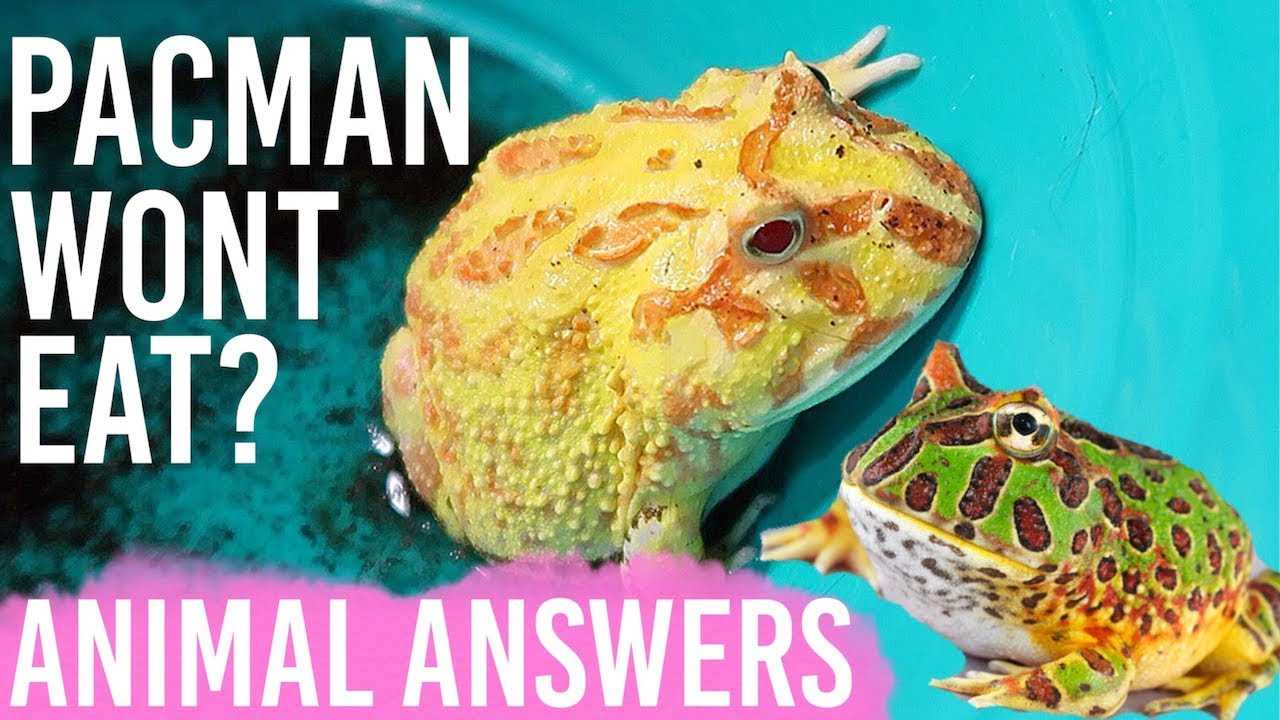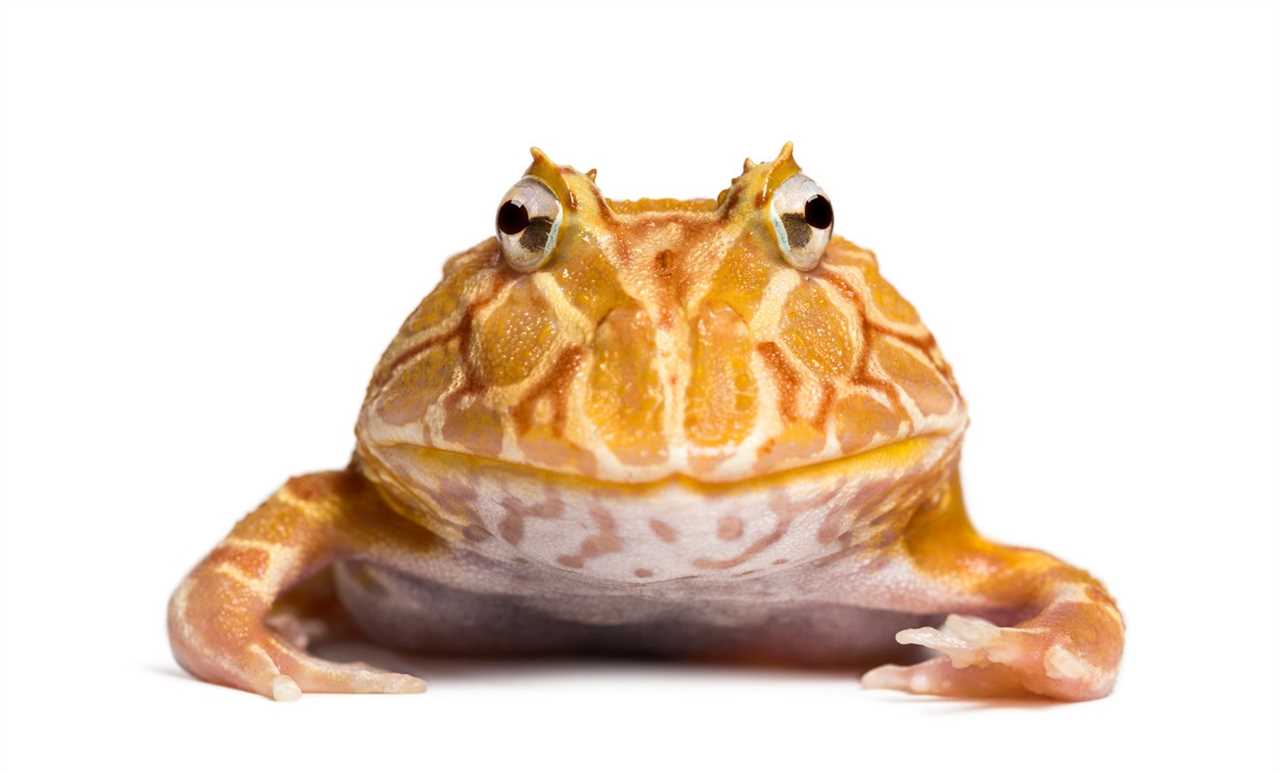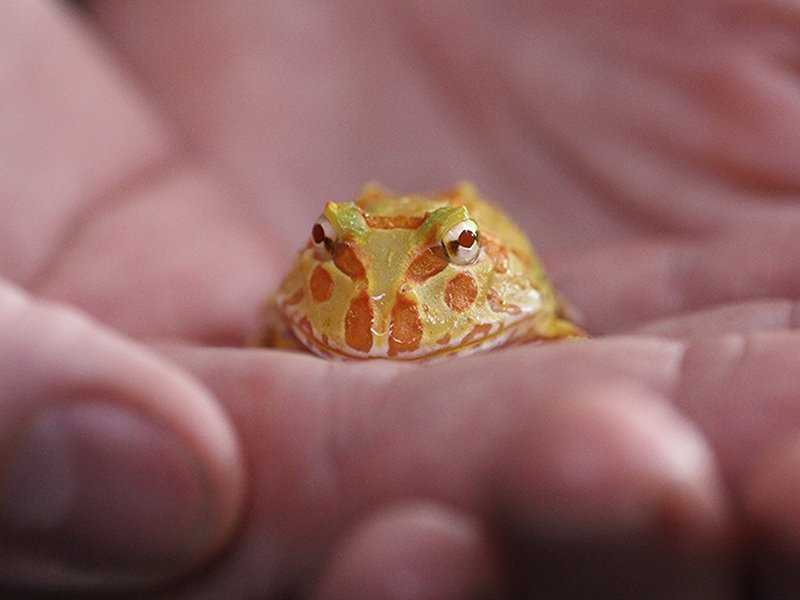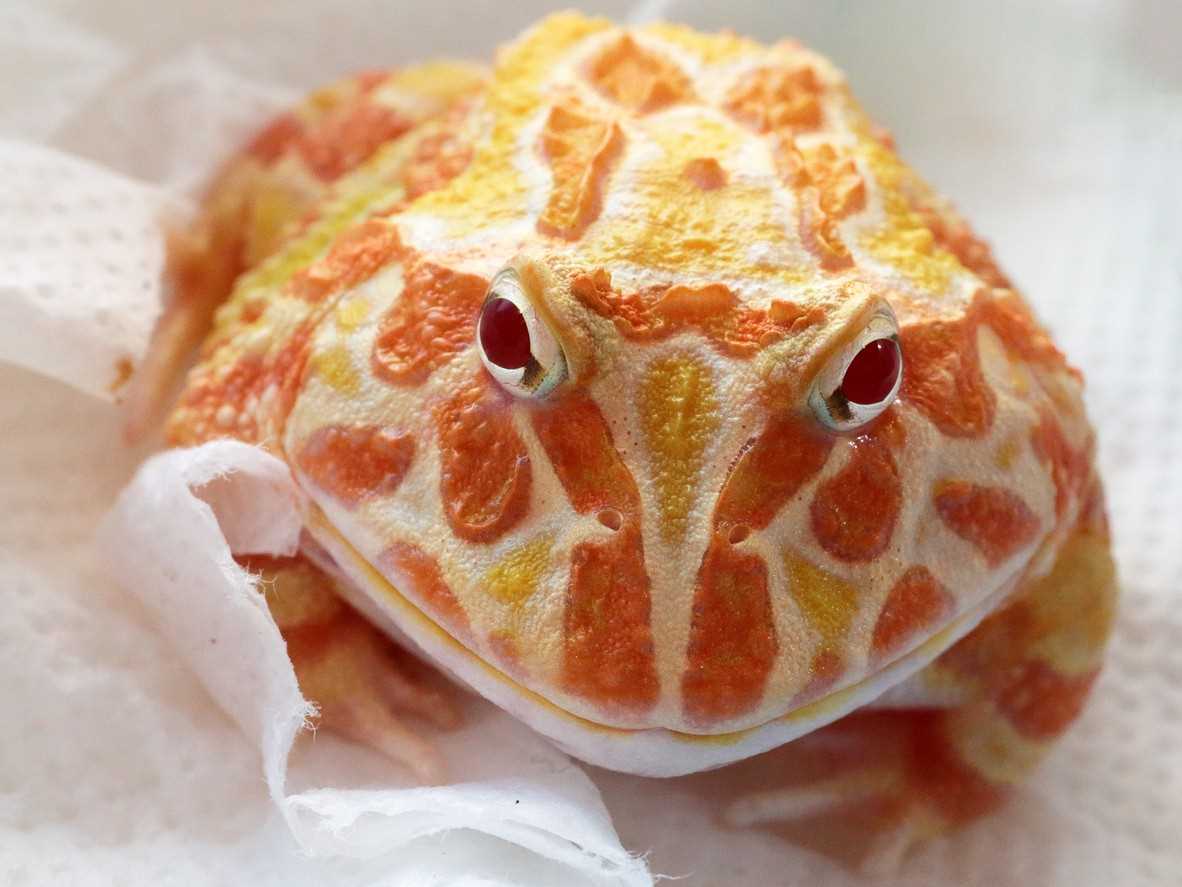
Sustenance is essential for any living creature, and the pacman frog is no exception. These frogs have a unique feeding behavior and can go for extended periods without eating. The duration a pacman frog can survive without eating depends on several factors, including its size, age, and overall health.
A prolonged period without eating can have negative effects on a pacman frog’s health. Without sustenance, the frog’s body will begin to use up its fat reserves for energy. This can lead to weight loss, weakness, and a compromised immune system. In severe cases, the frog may become emaciated and more susceptible to illness and diseases.
What is a Pacman Frog?
Unlike other frogs, Pacman Frogs are not great jumpers and spend most of their time on land. They have a unique feeding habit, where they remain still and wait for prey to come close. When a potential meal comes within striking distance, they lunge forward and use their wide mouth to swallow the prey whole.
Pacman Frogs are nocturnal creatures, meaning they are most active during the night. They have a lifespan of 6-10 years when properly cared for and can make fascinating pets for those who are willing to provide them with the appropriate habitat and sustenance.
Why do People Keep Pacman Frogs as Pets?

Pacman frogs are also known for their unique appearance. They have a squat body, large mouth, and bulging eyes, which often make them look like little pacman characters. Their vibrant colors and patterns further add to their appeal as pets. Many people find them aesthetically pleasing and enjoy having them as a decorative addition to their home.
Furthermore, Pacman frogs are generally hardy and can adapt well to captive conditions. They don’t require a specialized diet or complex care routines, making them suitable for beginners in the world of amphibian keeping. Their ability to tolerate a wide range of temperatures and humidity levels also makes them relatively easy to care for.
Feeding Habits of Pacman Frogs
The duration that a pacman frog can go without eating depends on a variety of factors, including its size, age, and overall health. On average, a pacman frog can go without eating for about 2-4 weeks. However, some pacman frogs have been known to go without food for up to 6 weeks.
During this time of fasting, pacman frogs are able to sustain themselves by using the energy stored in their fat reserves. Like many other amphibians, pacman frogs have the ability to store excess energy as fat for times when food is scarce. This adaptation allows them to survive in their natural habitats, which can be prone to periods of drought or limited food availability.
When feeding pacman frogs, it is best to offer them a variety of prey items, including crickets, mealworms, and small mice. The size of the prey should be appropriate for the size of the frog, as offering prey that is too large can pose a choking hazard.
Overall, pacman frogs are fascinating creatures that can go without eating for a surprising amount of time. With proper care and attention to their feeding habits, these unique amphibians can thrive in captivity and provide their owners with endless entertainment.
Factors Affecting the Duration of Fasting for Pacman Frogs

One of the main factors that determines how long a Pacman frog can go without eating is its size and age. Younger and smaller frogs generally require more frequent meals compared to older and larger frogs. Their metabolism is faster, and they need a constant supply of nutrients to support growth and development. On the other hand, adult Pacman frogs can tolerate longer periods of fasting due to their slower metabolism.
Environmental factors also play a role in determining how long a Pacman frog can go without eating. Temperature, humidity, and the availability of prey all affect the frog’s metabolic rate and energy needs. In cooler temperatures, Pacman frogs might enter a state of torpor or hibernation, which allows them to conserve energy and prolong the duration of their fasting period. On the other hand, in warmer temperatures and when prey is abundant, they may not need to fast at all.
Lastly, the natural behavior and feeding habits of Pacman frogs also impact the duration of their fasting period. These frogs are opportunistic feeders and can eat large amounts in a short period. They have a voracious appetite and will devour anything that fits into their wide mouths. However, during periods of scarcity or captivity, they can adjust their feeding habits and go without food for extended periods.
| Factors Affecting the Duration of Fasting for Pacman Frogs |
|---|
| Size and age |
| Overall health and condition |
| Environmental factors (temperature, humidity, prey availability) |
| Natural behavior and feeding habits |
Survival Tactics of Pacman Frogs During Prolonged Periods Without Eating
The Duration Without Eating
Pacman frogs have the ability to go for extended periods without consuming any food. While the exact duration can vary depending on the individual and its environment, these frogs are capable of surviving without eating for several weeks or even months. This duration is longer than what is observed in many other amphibians, making pacman frogs particularly resilient and adaptable to challenging conditions.
Conserving Energy
During times of food scarcity, pacman frogs have evolved to reduce their metabolic rate and conserve energy. By decreasing their physiological functions, such as respiration and digestion, the frogs can endure longer periods without needing to eat. This energy-saving mechanism allows them to survive in environments where food availability is limited and unpredictable.
Seeking Shelter
Another tactic employed by pacman frogs during extended periods without food is seeking shelter. These frogs are burrowers and will dig into the substrate or hide beneath leaf litter to wait for potential prey to pass by. By conserving energy and remaining hidden, pacman frogs increase their chances of encountering a meal, even during times of scarcity.
Utilizing Stored Fat Reserves
Overall, pacman frogs have evolved various survival tactics to cope with prolonged periods without food. By conserving energy, seeking shelter, and utilizing stored fat reserves, these amphibians demonstrate their remarkable adaptability and resilience in challenging environments.
The Role of Stored Fat in Pacman Frogs
When a pacman frog consumes food, it stores excess energy in the form of fat deposits. These fat reserves are located in various parts of its body, including its abdomen and back. During times when there is a lack of available food, the frog can rely on these fat reserves to provide it with the energy it needs to survive.
The duration that a pacman frog can go without eating largely depends on the amount of fat it has stored. Frogs with higher levels of stored fat can go for longer periods without eating compared to those with lower levels. This evolutionary adaptation allows pacman frogs to survive in their natural habitats, where food can be scarce at times.
Observing a Pacman Frog During a Prolonged Fast

During a prolonged fast, a pacman frog will exhibit several observable behaviors. One of the most noticeable changes is a decrease in activity level. The frog will become less active and spend most of its time hiding or burrowed beneath the substrate in its enclosure.
Pacman frogs exhibit a reduced appetite during a long fast:

When offered food during a prolonged fast, pacman frogs will typically show little to no interest in eating. They may ignore or refuse their usual food items, displaying a lack of appetite. This is due to their ability to suppress their metabolic rate and conserve energy when necessary.
Monitoring the duration of a pacman frog’s fast:
If a pacman frog has gone without eating for an extended duration, it may be necessary to consult a veterinarian to rule out any underlying health issues. Additionally, providing a variety of food options and attempting to stimulate the frog’s appetite through gentle movement or scent cues can help determine if the frog is no longer willing to fast.
Overall, observing a pacman frog during a prolonged fast can provide valuable insights into its natural survival mechanisms. These frogs have evolved to adapt to periods of food scarcity and can sustain themselves on stored fat reserves. While monitoring their fasting duration is important, it is also crucial to understand that pacman frogs have built-in mechanisms to survive without eating for extended periods of time.
How to Determine if a Pacman Frog is Hungry
Signs of Hunger
There are several signs that can indicate if a Pacman frog is hungry. One of the most obvious signs is if the frog appears to be actively searching for food. This can include behaviors such as opening its mouth wide and trying to catch anything that moves nearby.
Another sign of hunger in Pacman frogs is if they become more active at night. These frogs are primarily nocturnal and will usually become more active when they are hungry and searching for food.
Additionally, a hungry Pacman frog may exhibit a decreased appetite for non-live food. While they will typically eat a variety of food items, such as insects and small rodents, a hungry frog may only want to eat live prey.
Monitoring Feeding Habits
It is also important to consider the size and age of the frog. Younger frogs may require more frequent feedings, while larger adult frogs may be able to go longer periods between meals.
Regularly monitoring the weight of the frog can also help determine if it is hungry. If the frog starts losing weight or appears to be getting thinner, it may be a sign that it is not getting enough food and needs to be fed more often.
Conclusion
Signs of Hunger in Pacman Frogs
Changes in appearance can also be a sign of hunger. When a Pacman frog hasn’t eaten for a while, its body may appear slightly shrunken or less plump. This is because they use up their stored fat reserves to survive during food scarcity. Additionally, their eyes may appear sunken, which is another indication of hunger.
Mistakes to Avoid While Feeding a Pacman Frog
3. Incorrect feeding schedule: Pacman frogs are opportunistic feeders and will eat whenever prey is available. However, establishing a regular feeding schedule is beneficial for both the frog and the owner. Feeding them at the same time every day or every few days helps maintain their digestive health and prevents overfeeding.
10. Neglecting veterinary care: Like any other pet, pacman frogs require regular veterinary check-ups. Regular examinations can help detect any health issues or underlying problems that may affect the frog’s appetite. Neglecting veterinary care can result in prolonged appetite loss or other health complications.
By avoiding these mistakes and providing proper care, pacman frog owners can ensure their pets remain healthy and happy, thriving on a balanced diet and regular feeding schedule.

I’m Lena Adams—a product of an unconventional upbringing in the African wilderness. My father, a daring explorer of African wildlife, sparked my fascination with reptiles, a passion that intertwined with the tragic loss of my mother during an expedition, leaving an indelible mark on my life. Driven to understand the creatures that captivated my parents, I embarked on my journey, sharing insights about reptiles, frogs, and lizards on my website. Through my explorations and conservation efforts, I honour my family’s legacy while seeking connections—to the creatures, nature, and the mother whose presence I yearn to understand.
